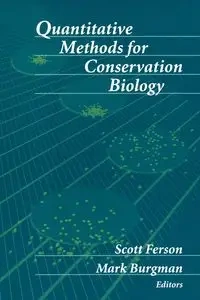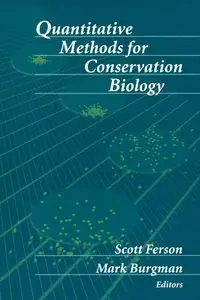Quantitative Methods for Conservation Biology - Scott Ferson
Quantitative Methods for Conservation Biology - Scott Ferson
AutorzyScott Ferson
EAN: 9780387954868
Marka
Symbol
721HJX03527KS
Rok wydania
2002
Strony
336
Oprawa
Miekka
Format
15.6x23.4cm
Język
angielski

Bez ryzyka
14 dni na łatwy zwrot

Szeroki asortyment
ponad milion pozycji

Niskie ceny i rabaty
nawet do 50% każdego dnia
Niepotwierdzona zakupem
Ocena: /5
Marka
Symbol
721HJX03527KS
Kod producenta
9780387954868
Rok wydania
2002
Strony
336
Oprawa
Miekka
Format
15.6x23.4cm
Język
angielski
Autorzy
Scott Ferson

Quantitative methods are needed in conservation biology more than ever as an increasing number of threatened species find their way onto international and national "red lists. " Objective evaluation of population
decline and extinction probability are required for sound decision making. Yet, as our colleague Selina Heppell points out, population viability analysis and other forms of formal risk assessment are underused in policy
formation because of data uncertainty and a lack of standardized methodologies and unambiguous criteria (i. e. , "rules of thumb"). Models used in conservation biology range from those that are purely heuristic to some that
are highly predictive. Model selection should be dependent on the questions being asked and the data that are available. We need to develop a toolbox of quantitative methods that can help scientists and managers with a wide
range of systems and that are subject to varying levels of data uncertainty and environmental variability. The methods outlined in the following chapters represent many of the tools needed to fill that toolbox. When used in
conjunction with adaptive management, they should provide information for improved monitoring, risk assessment, and evaluation of management alternatives. The first two chapters describe the application of methods for
detecting trends and extinctions from sighting data. Presence/absence data are used in general linear and additive models in Chapters 3 and 4 to predict the extinction proneness of birds and to build habitat models for plants.
EAN: 9780387954868
EAN: 9780387954868
Niepotwierdzona zakupem
Ocena: /5
Zapytaj o produkt
Niepotwierdzona zakupem
Ocena: /5
Napisz swoją opinię

